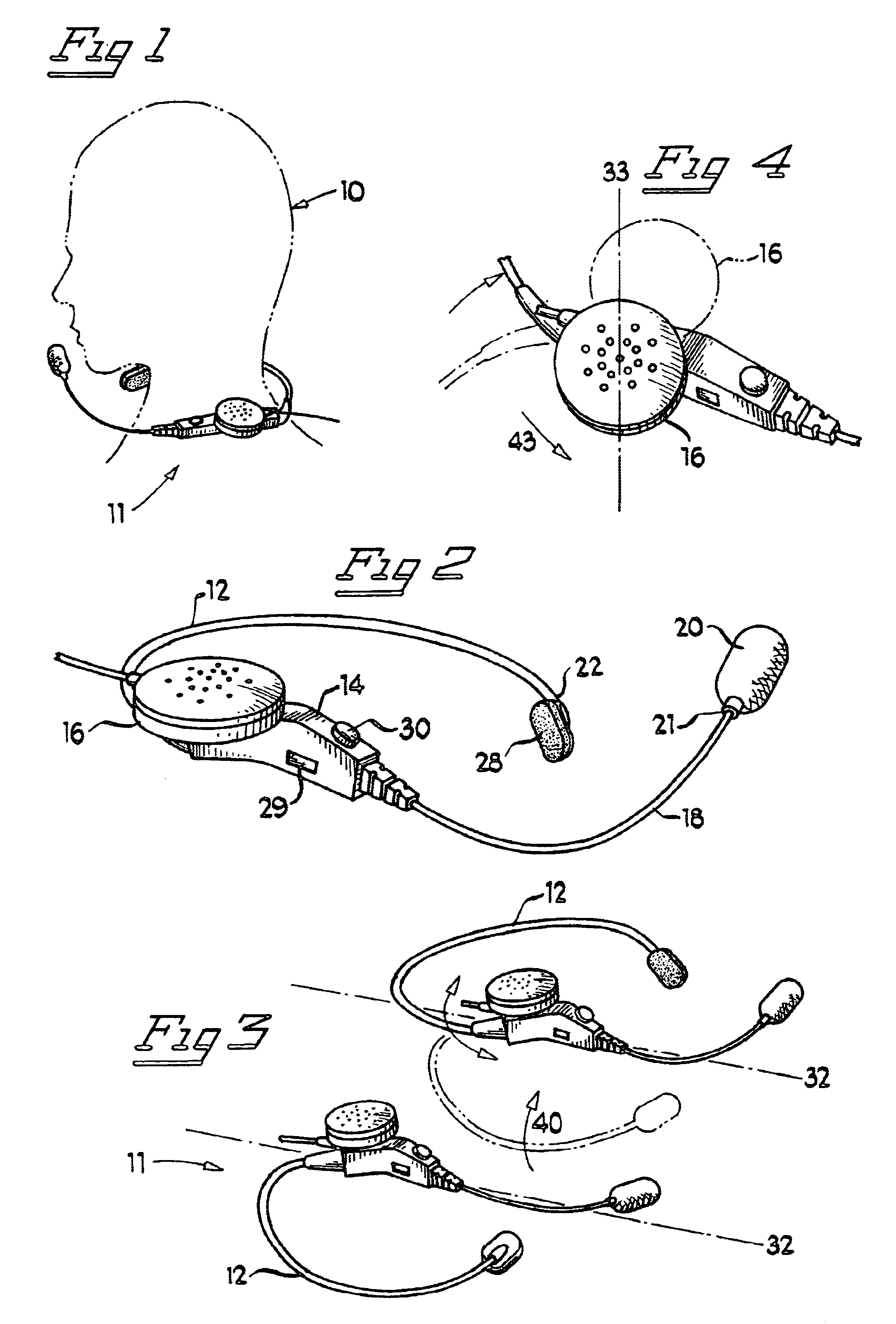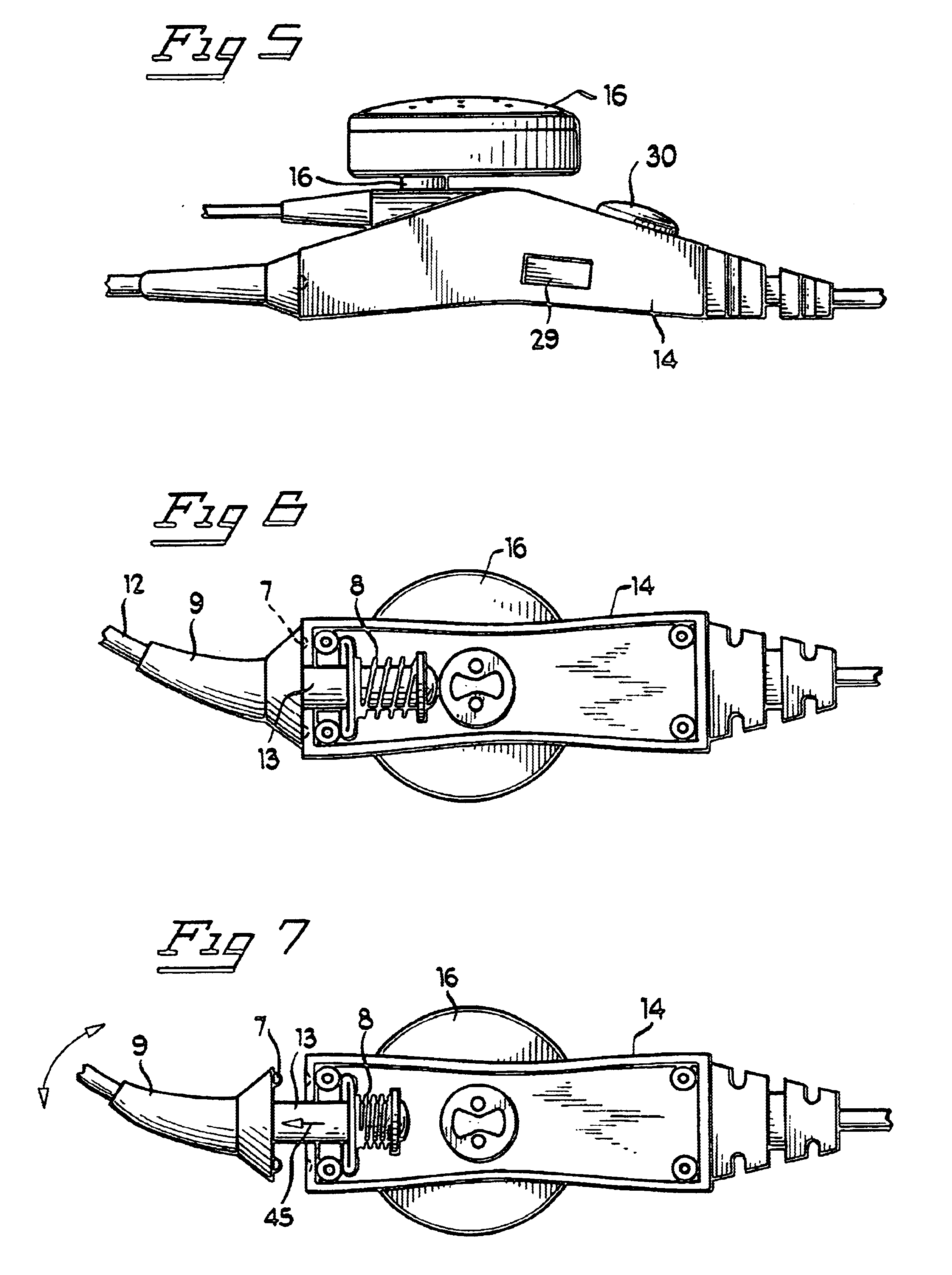Personal wearable communication and speaker system
a wearable communication and speaker technology, applied in the field of hands-free communication devices, can solve the problems of increasing the size and weight of the headset, affecting the comfort of the user, and affecting the use of the headset, so as to achieve the effect of high quality acoustic performance, comfort and stability, and sacrificing quality, sound or comfor
- Summary
- Abstract
- Description
- Claims
- Application Information
AI Technical Summary
Benefits of technology
Problems solved by technology
Method used
Image
Examples
Embodiment Construction
[0026]FIG. 1 shows a user 10 with a neckset 11 of the present invention around his neck. As shown in FIGS. 1 and 2, the resilient gripping band 12 defines a generally horizontal plane. The acoustical output device or speaker, which is housed in a speaker housing 16 mounted to a base 14, faces in a generally upward direction and is disposed just below the user's ear. An adjustable boom microphone support arm 18 extends from the front of the base 14. The microphone 20 is at the free end 21 of the arm 18. The base 14 includes a control 29 for adjusting the volume output of the speaker 16, and a button 30 that can be used as a push-to-talk, mute, on / off, or answer switch.
[0027]The distal end 22 of the resilient band 12 is enlarged to distribute the gripping forces applied to a wider area than a simple point load. A pad 28 faces inwardly to provide a cushion and the material of which the pad is made can be selected to enhance the frictional properties of the pad, which can add to the sta...
PUM
 Login to View More
Login to View More Abstract
Description
Claims
Application Information
 Login to View More
Login to View More - R&D
- Intellectual Property
- Life Sciences
- Materials
- Tech Scout
- Unparalleled Data Quality
- Higher Quality Content
- 60% Fewer Hallucinations
Browse by: Latest US Patents, China's latest patents, Technical Efficacy Thesaurus, Application Domain, Technology Topic, Popular Technical Reports.
© 2025 PatSnap. All rights reserved.Legal|Privacy policy|Modern Slavery Act Transparency Statement|Sitemap|About US| Contact US: help@patsnap.com



